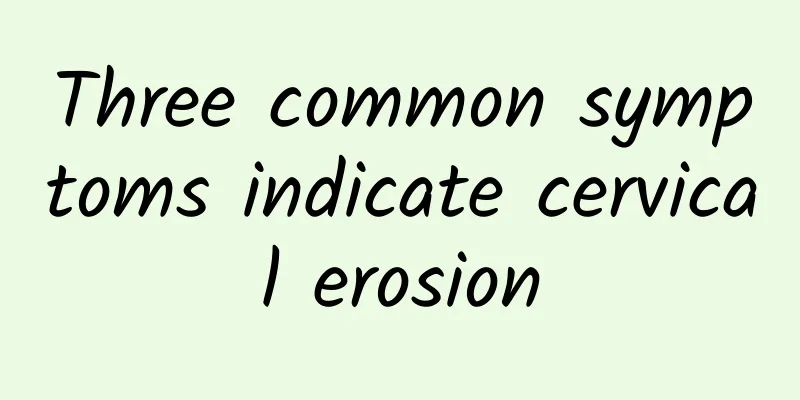What causes cervicitis and how to treat it

|
Cervicitis is an inflammation of the cervix caused by a variety of factors, including infection, mechanical injury, chemical stimulation, and immune factors. Treatment methods include medication, physical therapy, and lifestyle adjustments, which should be selected based on the cause and condition. 1. Infection is one of the main causes of cervicitis. Bacterial, viral, fungal or parasitic infections can all cause inflammation. Common pathogens include gonococci, Chlamydia trachomatis, human papillomavirus, etc. Infectious cervicitis is usually transmitted through sex and may also be caused by poor personal hygiene. In treatment, doctors will prescribe antibiotics, antiviral drugs or antifungal drugs, such as azithromycin, metronidazole or fluconazole, depending on the type of pathogen. 2. Mechanical damage may also cause cervicitis. Frequent gynecological examinations, abortion surgery, cervical injury during delivery, or improper use of intrauterine contraceptive devices may all cause inflammation. For cervicitis caused by mechanical damage, further stimulation should be avoided, and local anti-inflammatory treatment should be performed when necessary, such as using anti-inflammatory suppositories or ointments. 3. Chemical irritation is another common cause. Improper use of vaginal douches, condom lubricants or other chemicals may damage the natural barrier of the cervix and cause inflammation. When treating, it is necessary to immediately stop using irritating substances and adopt gentle care methods, such as washing with saline or applying restorative ointments. 4. Immune factors may also be involved in the occurrence of cervicitis. People with low immunity or autoimmune diseases are more likely to develop cervicitis. Improving immunity is the key to prevention and treatment. You can strengthen your physical fitness through a balanced diet, regular work and rest, and proper exercise. 5. Treatment of cervicitis also includes physical therapy, such as laser therapy, cryotherapy or electrocautery, which is suitable for chronic cervicitis or when drug treatment is ineffective. These methods remove diseased tissue through physical means and promote cervical repair. 6. Adjusting your lifestyle is equally important for preventing and alleviating cervicitis. Maintaining personal hygiene, avoiding unclean sexual behavior, having regular gynecological examinations, and choosing mild care products can all help reduce the occurrence of cervicitis. The treatment of cervicitis requires a personalized plan based on the specific cause and condition, and comprehensive management combined with a healthy lifestyle. Regular follow-up and reexamination are the key to ensuring the effectiveness of treatment. Patients should actively cooperate with the doctor's advice and adjust the treatment plan in a timely manner. |
<<: The dangers of mild cervical hypertrophy
>>: What are the symptoms of functional uterine bleeding in women over 47 years old?
Recommend
Experts help you understand the causes of dysmenorrhea
Nowadays, women experience pain for a few days ev...
The main clinical causes of cervical hypertrophy
Experts have found that the cause of cervical hyp...
Married women with dysmenorrhea should be alert to reproductive system diseases
Many female friends are not very concerned about ...
Female patients should understand the care methods of pelvic inflammatory disease as early as possible
According to medical evidence, pelvic inflammator...
What are the causes of cervical hypertrophy?
What are the causes of cervical hypertrophy? Cerv...
I am bleeding again 6 days after abortion. What's going on?
Artificial abortion refers to artificial abortion...
The latest 1:1 anti-aging walking method to prevent brain degeneration
Do you have any of the following situations? &quo...
What causes dysmenorrhea?
Generally, when it comes to dysmenorrhea, everyon...
Obesity is closely related to uterine fibroids. A reasonable diet can treat uterine fibroids.
Is obesity related to uterine fibroids? Can a pro...
What should you pay attention to after painless abortion
What should you pay attention to after a painless...
What are the diagnostic methods for women with menstrual disorders?
What are the diagnostic methods for female menstr...
Will cervical precancerous lesions be life-threatening if left untreated?
Cervical precancerous lesions are one of the dise...
Patients with pelvic inflammatory disease should know some examination methods
The frequent occurrence of pelvic inflammatory di...
What causes ectopic pregnancy in the first child?
The first pregnancy refers to the first pregnancy...
The most effective way to treat cervical warts
In the treatment of diseases, Western medicine is...









